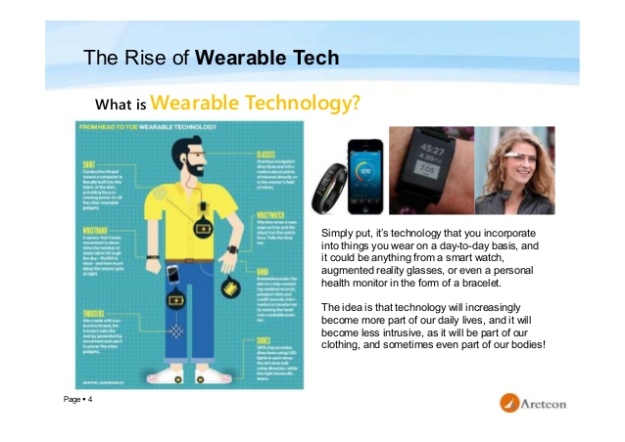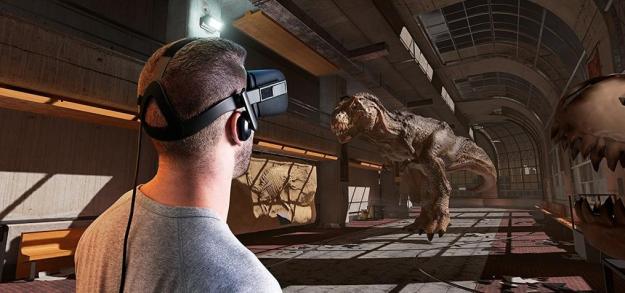
New communication technology –including social media, wearables, virtual reality — is turning the advertising industry upside down.
Consumer behavior is shifting rapidly towards these new modes of communication — and the advertising industry is following suit. In 2017, digital advertising is expected to overtake TV advertising for the first time ever, pulling in $202 billion dollars in the process — a sure sign of the irrevocable transformation of the advertising industry.
But as technological innovation continuously redefines the landscape of advertising, many advertisers are struggling to keep up. Modern advertisers are confronted with the daunting task of riding this massive wave of technological change in the ad industry without getting drowned by it.
Traditional media strategies that were built around loose branding budgets and just a few reliable channels are no longer viable. Advertisers without a roadmap for this uncharted terrain are quickly becoming lost in forests of inaccurate data they can’t make sense of or dark caves of illusory tech that yield no light at the end of the tunnel.
With that in mind, I’ve compiled a list of the three most important trends that are shaping the future of advertising — and will continue to do so — and included some tips on how to take advantage of them.
Trend 1: Ads are becoming more dynamic and personalized
What does this mean?
In the modern ‘attention economy‘ where consumer attention is divided across more devices, applications and formats than ever before, only engaging and relevant ads will command consumer attention. Advertisers are creating content that engages their target audiences in ways that are most likely to command their attention — in-feed videos in social media feeds, interactive banners in games in virtual reality headsets and native placements browsing popular apps. Across all of these formats, behavioral profiling technology allows advertisers to personalize these messages to their audience based on their browsing history, location, time of day and demographic profile.
What can you do about it?
First, create content specifically designed for that formats that align with your audience’s browsing behavior — this will ensure that your ads are engaging. Choose inventory that is interactive and collects rich data. Put systems in place that profile your audience and match your content to their interests and behaviors — this will ensure that your ads are relevant.
Trend 2: Advertising channels are becoming automatically integrated
What does this mean? A
s consumers divide their attention across devices, their behaviors become more complex. Advertisers are developing integrated strategies that deliver ad sequences to consumers as they check their email at work on desktops, watch movies at home on connected TVs, play games during their commute on tablets and post socially on their phones at a concert. Real-time audience optimization makes it possible for advertisers to identify and target consumers second by second to deliver timely ads that facilitate desired behavior.
What can you do about it? Automate as much of your advertising process as possible — configure your advertising mix so that as many channels as possible communicate programmatically with one another in real time. This prevents your channels from competing against one another and optimizes the efficiency of your ad placements — and makes less work for you. Select advertising partners that are willing to integrate with one another.
Trend 3: Transparent attribution is tying all ad spend to hard data
What does this mean?
The concept of a ‘branding’ budget — whose performance cannot be quantified — is obsolete and is quickly being discarded across all advertising channels in favor of direct-response metrics. New data streams and attribution models in advertising are making it possible for advertisers to understand the entire conversion flow of their customers. These increasingly complex models attribute proportional credit to each advertising touchpoint over the course of the consumer journey show the relative performance of every channel.
What can you do about it?
Reorient your advertising budget towards performance by tracking where each and every dollar is going. Develop a holistic understanding of your marketing funnel that eliminates ‘branding black holes’ and accounts for each and every channel’s contribution towards your bottom line. Demand transparent performance reports from all advertising partners and use this information to develop a holistic attribution model that spans all of your channels.
The Last Word
The advertising industry is sure to change even more in the next ten years than it did in the last ten. Awareness of these three enduring trends in advertising will enable you to unobtrusively deliver relevant ads to targeted consumers while collecting thorough data — with whatever exciting new ad technology is available.
Stay on top of developments in advertising technology — but don’t overcommit. Avoid becoming too focused on any new individual component of your advertising mix. No matter how sleek a new piece of inventory looks or how thorough a new attribution report appears, each new improvement in technology will only be a component part of your overall advertising strategy. Remember… keep an open mind. As ad technology continues to develop, ask yourself if it fits into one of these three enduring trends described. If it does, and it aligns with your strategy — give it a shot. The most successful advertisers in this data-driven future will be the ones who are willing to take risks on new channels, systems and processes.
I consider myself a “tech skeptic” – one who really needs to see that technology fits or facilitates an inborn desire to do something and has the potential to convert for brands or developers. Without both, innovation is short-lived – a fad that stays in the early adopter world and never tips mainstream. So when I came back to my office after attending the FutureX Live event orchestrated by innovative brand-builder Moxie, beyond excited about the future of Virtual Reality, Augmented Reality and Mixed Reality, my partner thought I drank too much of the Moxie Kool-Aid.
But right now, I am fairly sure you could use a little escape from reality too and are able to see the potential like have. Inventors and technologists have been obsessed with coming up with new ways to escape reality or simulate a better future. Trouble has been though that technology and funding hasn’t always allowed for it to be “real” enough. I still thought it was pretty far off from being market and brand viable beyond gaming enthusiasts until I listened to the broad panel of experts Moxie assembled for this conference from film, gaming, academics, broadcast media, advertising and big brands.
Escaping Reality is an Inborn Human Need
In the VR or creative virtual space, you can have superpowers. It can let you do things that you couldn’t do before, see things you wouldn’t be able to experience, and of course, transport yourself out of your real world.
While on the one hand virtual reality scares people because of that concept of possibly being unable to distinguish what is real and what isn’t. Are we in the Matrix? But on the other, the idea of walking on top of the Great Wall of China or something you might not be able to experience, is so compelling that we can’t help but find ways as humans to simulate and demonstrate our viewpoints and experiences for others. It’s not just about escaping reality but about creating a deeper connection. Without the technology, this is just another means for us to express our stories.
Virtual Experiences Have a More Powerful Psychological Connection
According to Dr. Grace Ahn, behavior researcher and assistant professor at the University of Georgia, “Decades worth of research has shown that very brief interactions in virtual worlds have residual effects that transfer into the physical world and change the way that you think and behave in the physical world.”
Making a connection in the virtual world involves multiple factors that strengthen the connection. The user experiences everything first hand and is in control that gives the powerful element of being self-endorsing. Your VR self is telling your real self about the experience, and that is extremely hard to negate.
Strong Investments by Brands & Platforms
With strong investment activities into VR, AR and 360 Video by brands, broadcast media and social platforms, mixed reality has already moved out of the fringe and into the mainstream. Facebook’s investment in Oculus Rift is particularly telling because it can transcend gaming to be a social tool. Playwire Media’s strength growing in-game advertising means conversion and measurement will be strong. Huffington Post’s acquisition of RYOT and USA Today’s investment in producing 360/VR videos and Discovery VR immersive projects shows a lot of banking on the future of broadcast media to build the next generation of fans. The one connected element here – content is not free, cheaply generated or user-built – it’s being built by a new tech-savvy generation of journalists, story-tellers, marketers, product designers and advertisers.
So, is Virtual Reality going to be mass-adopted or is it just a new technology fad? Futurist & Host of Brain Games, Jason Silva put it best, “People should contextualize virtual reality as just the next chapter of the ongoing human desire to manifest our consciousness outside of our minds, right in front of our eyes. From oral storytelling around the campfire to books to cinema to now virtual reality, we want to virtualize our experience so that we can share our experience. These are bridges that we’re filling between each other’s minds. These are mediums and interfaces that allow our minds to share space and time and mind together. It stems from the human desire for connection with one another. I don’t think these technologies are going to separate us, I think they’re going to bring us closer together.”

This was a difficult question to get to grips with the parameters being so broad and the danger of exploring too much/too little.
To be honest, a single example did not spring to mind rather a new way of interacting and communicating, ie with computers. I have been fortunate in that I grew up with computers. My father worked for Lyons Tea and saw the first ever computer in a huge room there! The first thing that came to mind was Alexa, I loved this concept when I first heard of it – replaces lists, paper calendars all those annoying messy bits everywhere all under one hat. She plays my music turns on the lights orders my shopping! My husband at 79 years hates it, he has to interact with a non human how tedious. I admire the way she is growing, she has humour like playing Christmas tunes after Christmas. I do not have to sit for hours on a computer, she Googles for me! The new ad is great again it has humour, artificial intelligence is on its way.
It epitomises the way we are going, other examples are FITBIT a very popular device to keep track of your fitness levels – links in to your computer we are getting connected in new ways, before it was post, telephone chat over the garden hedge now it is Facebook, Fitbit, Alexa( now makes calls). The Sci-Fi books I read in my younger days are coming true.
Following on from this we now have Readly.com for all your papers and magazines, Craftsy for lessons in needle work, cakes and woodwork in fact all crafts. You can study online with places such as the Centre of Excellence, The Open College of the Arts. What does all this mean , we are becoming more isolated but also more connected, we minimise and concentrate on the important stuff . We use Facebook and Twitter to see what the world is up too.
Is this NEW – not in my view we are still the same we have just changed the way we communicate and work using computers. The influence from the past, is to put all our knowledge in a new package ie computer rather than books and paper and voice. Now wherever you are, you can learn, find out about the world, shop and talk to friends all from your own environment.
To the future, Alexa is developing, she now has a screen and I expect in the future she will get smaller less intrusive and eventually we will all have one implanted that will read our thoughts and act on them. The artist Neil Harbisson has such a device to allow him to hear colour as he is colour blind.
It is all becoming more interactive these days look at games such as Occulus Rift and Brain Games


http://channel.nationalgeographic.com/brain-games/

